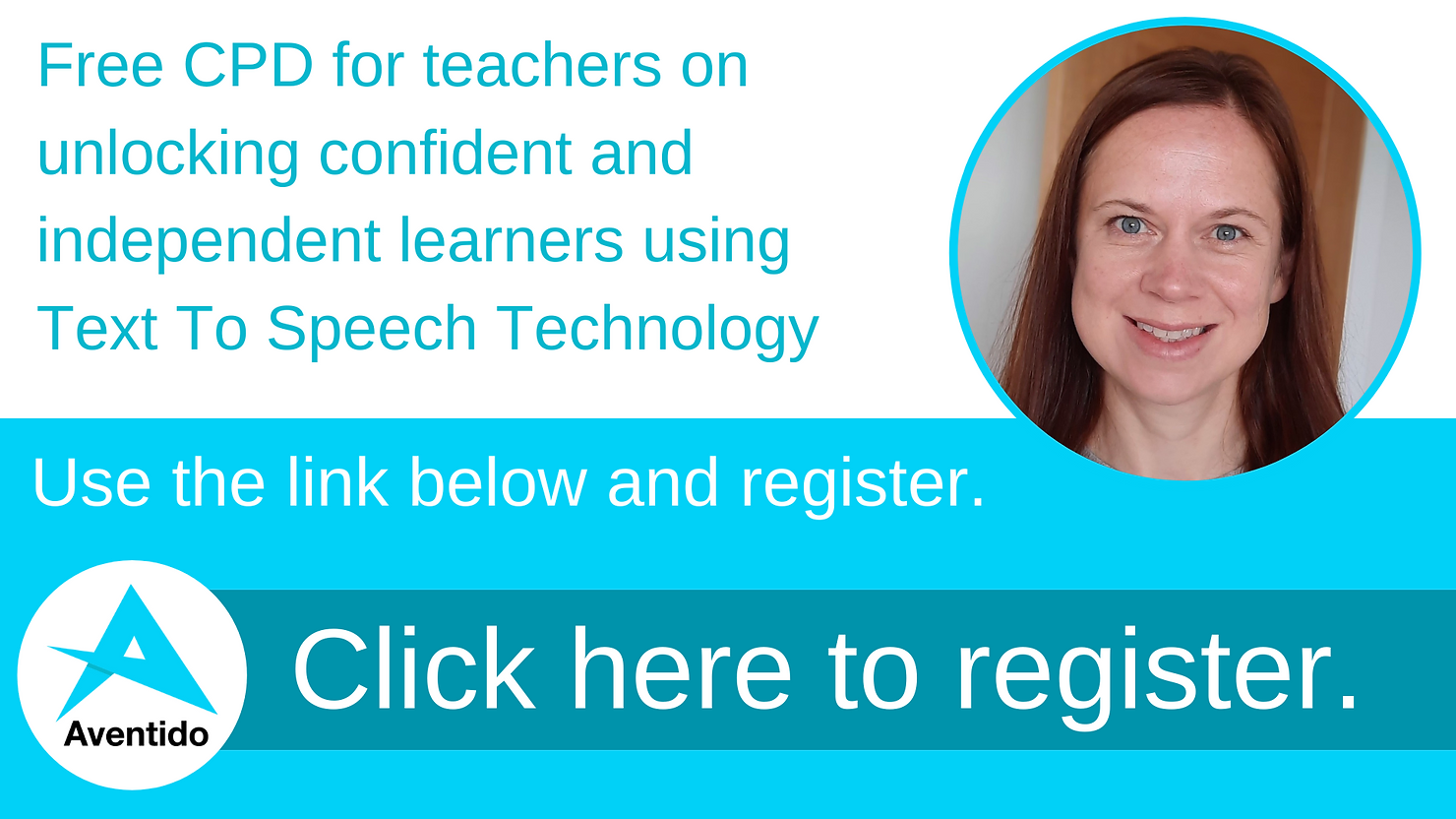
The Top Five Things That Teachers Need To Know About Text To Speech Technology
Within the education system, there is little training for Primary and Secondary school teachers on supporting pupils with learning differences such as dyslexia and yet there is a wealth of technology that is available to help dyslexic learners ‘level the playing field’ and unlock academic potential. In fact, assistive technology can be used as a part of the strategy for developing confident and independent dyslexic learners alongside effective differentiated teaching practices.

One of the most common types of assistive technology that is available is ‘Text-To-Speech’, technology that reads out text on laptops, tablets, and smartphones as well as from printed teaching materials such as exam papers and textbooks.
In the video below, our very own Mary Wilcox explains the top five things that teachers need to know about how text-to-speech technology can support a dyslexic learner.
Mary explores the following topics:
-
You don’t have to pay to use text-to-speech technology.
-
School textbooks can be accessed using text-to-speech technology.
-
Printed text can be accessed using text-to-speech technology.
-
Text-to-speech technology helps with learning languages in MFL.
-
Text-to-speech technology can be used to provide access to exams.
If you are a teacher within primary and secondary education and would like to receive some CPD training on unlocking confident and independent learners using text to speech technology, then click the banner below and register for your free training and free license of TextAid text to speech software.

Mary Wilcox
Mary has worked in the assistive technology sector since 2016 with experience in demonstrating software at both virtual and physical events.
Prior to working in Assistive Tech, Mary was a primary school teacher and uses her knowledge of teaching, learning styles and specific learning difficulties to educate people about assistive technology in a relaxed and easy-to-understand manner.
At Aventido, Mary continues to help people use Assistive Technology; providing webinars, presentations and training